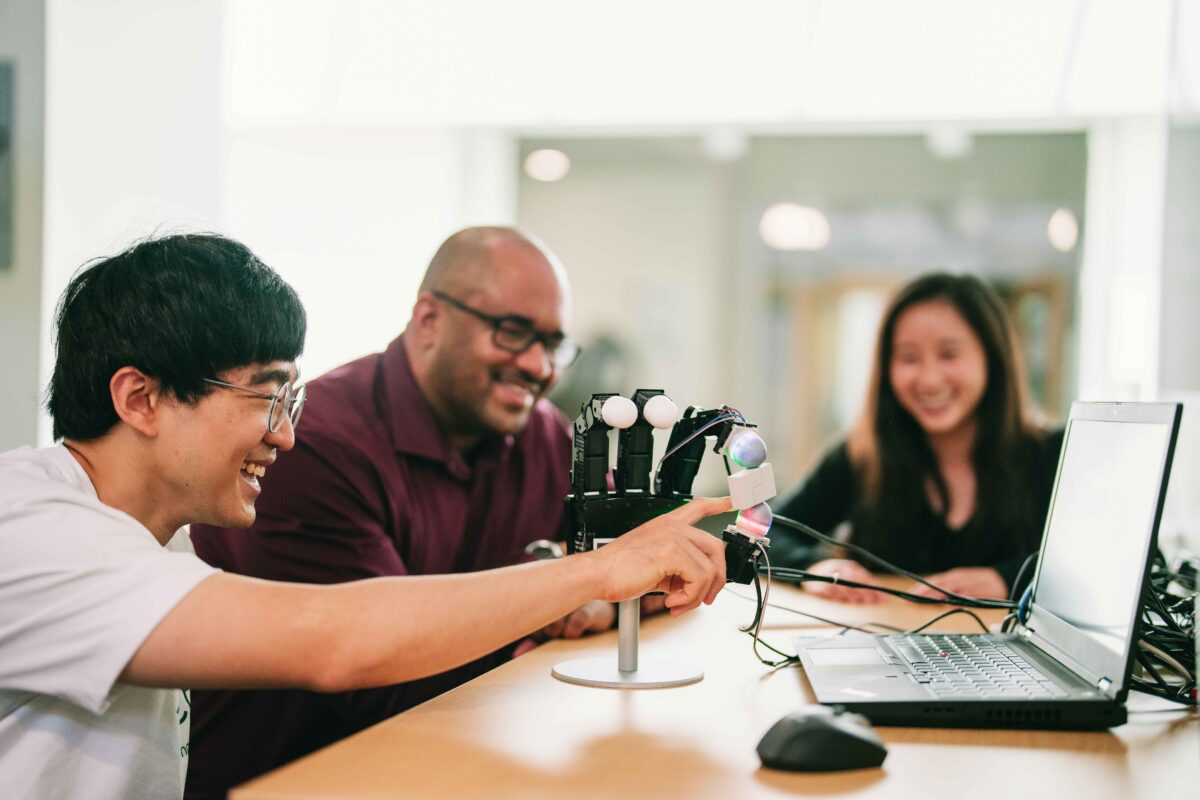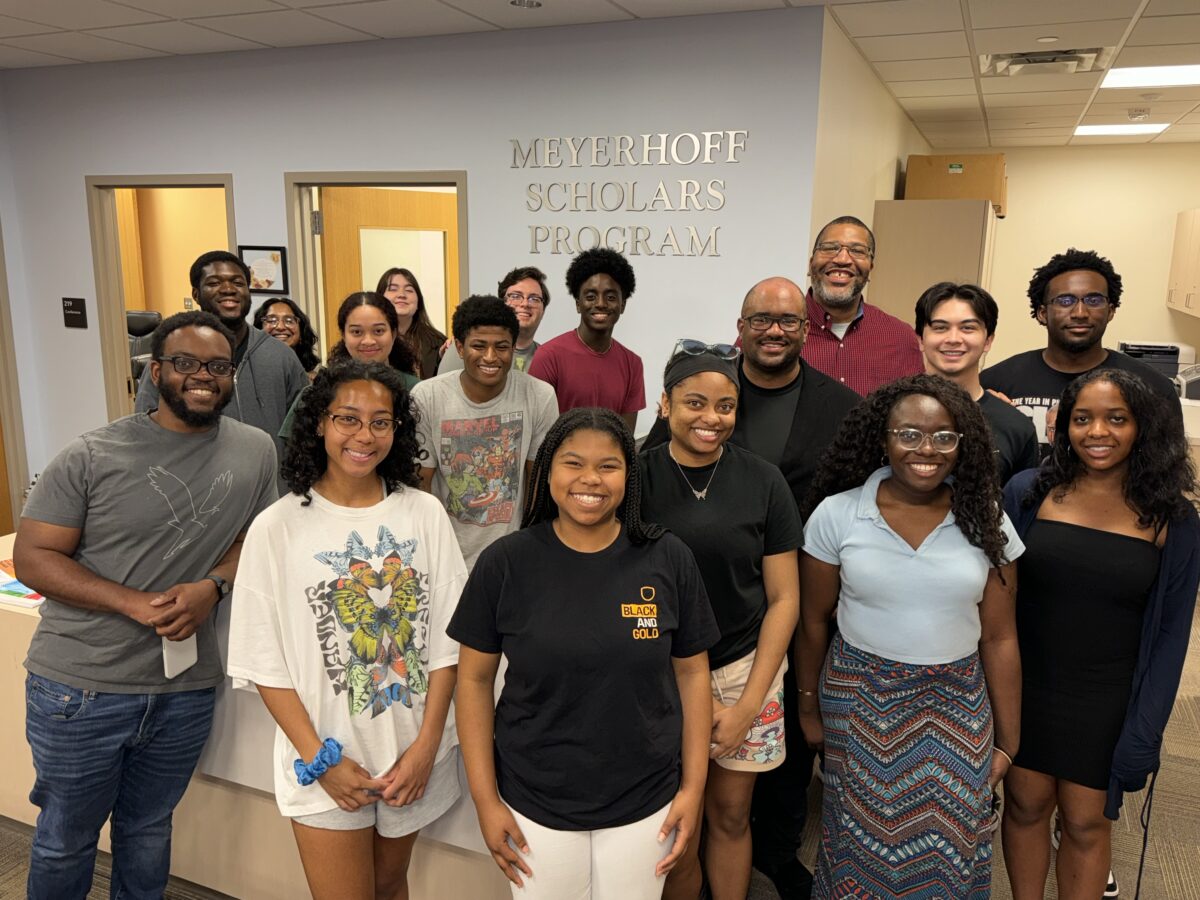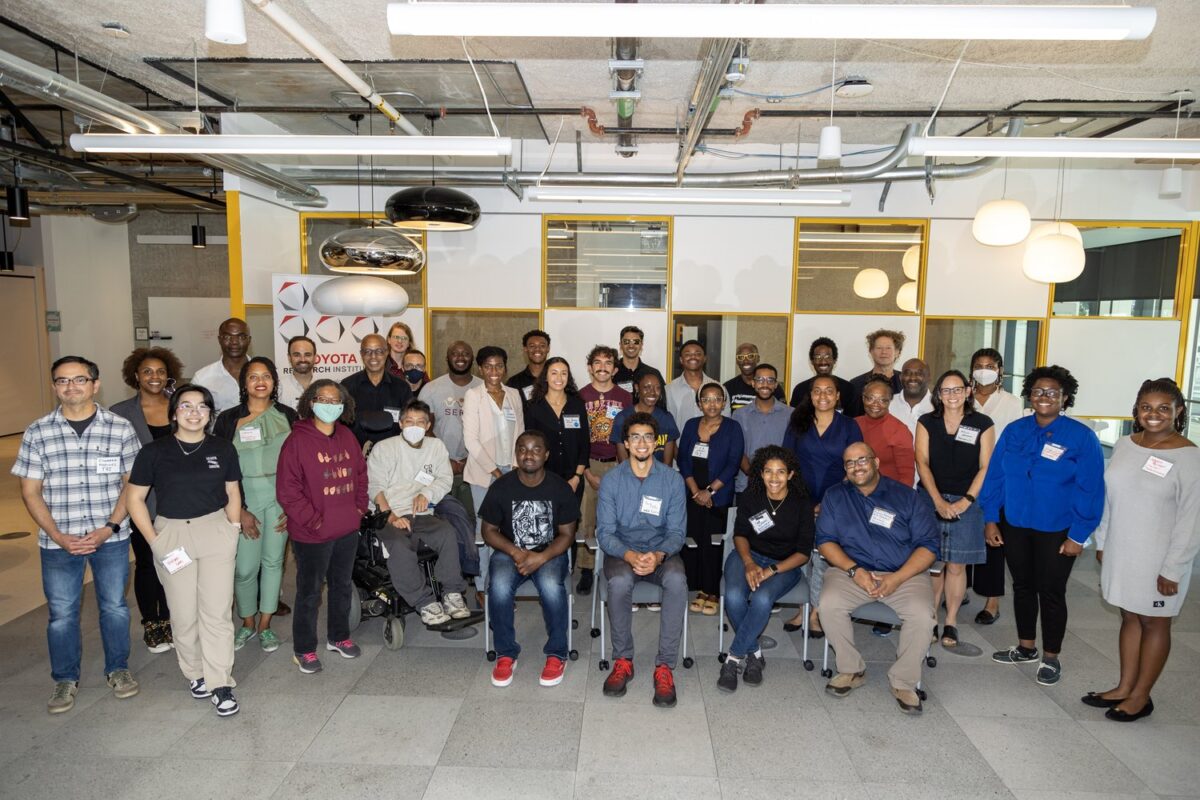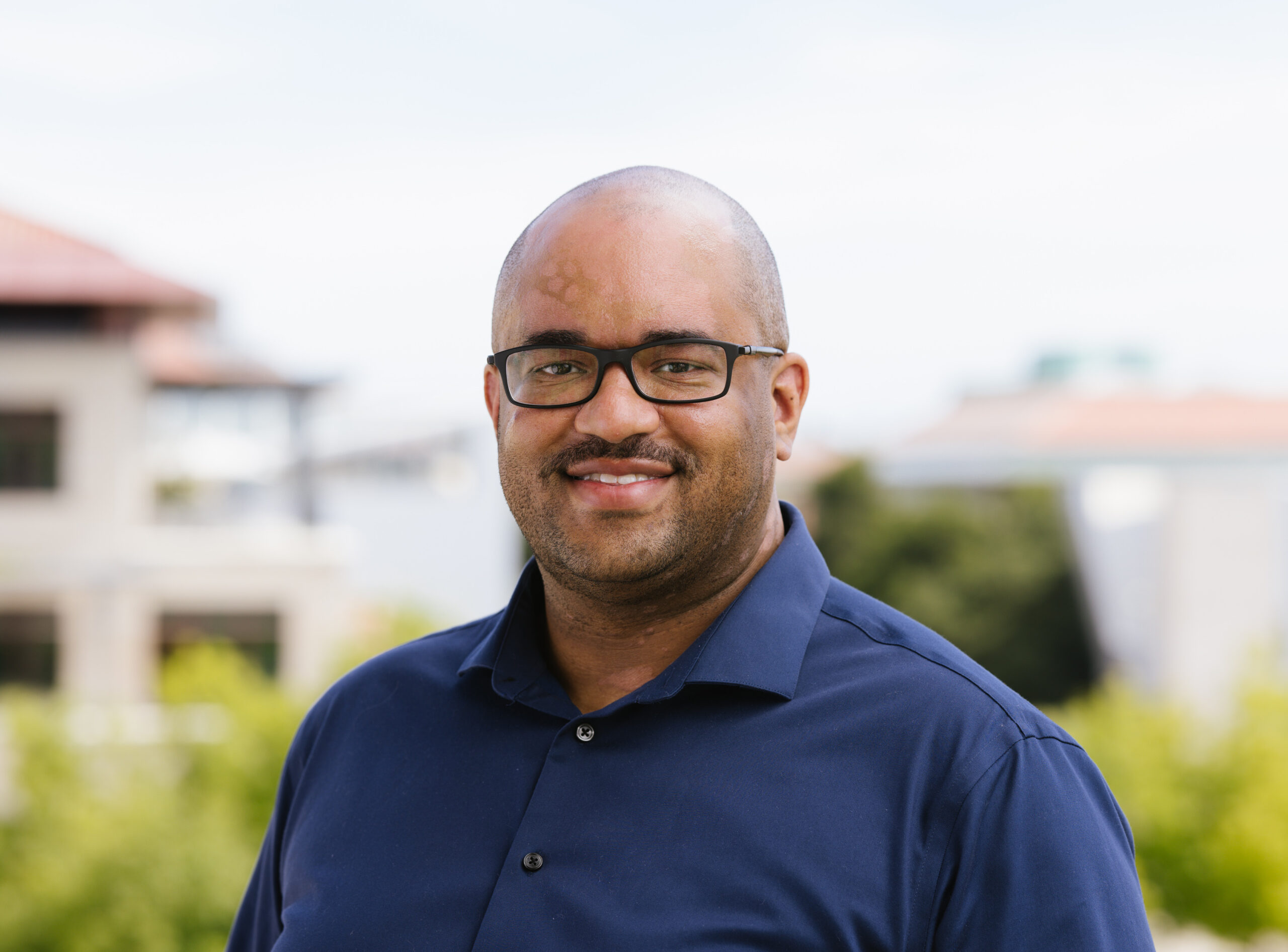Meet Monroe Kennedy, III, a Meyerhoff Scholar (M20) who earned his B.S. in mechanical engineering from UMBC in 2012 before earning his M.S. in robotics and Ph.D. in mechanical engineering and applied mechanics from the University of Pennsylvania. Monroe is now an assistant professor in the mechanical engineering department at Stanford University. His work is in collaborative robotics, building systems capable of extending robotic autonomy to scenarios where robots work closely around humans and must anticipate their needs to be effective teammates. Outside of his role as a professor, Monroe serves as a national director for Black in Robotics, a nonprofit organization dedicated to enhancing diversity within the field of robotics. Take it away Monroe!
Q: What brought you to UMBC?
A: I came to UMBC for its mechanical engineering program and the Meyerhoff Scholars Program. I had a passion for invention and design and UMBC was the perfect place to gain knowledge so I could have an impactful career. During high school, I was taking courses at a community college, and one instructor was aware of the Meyerhoff program and nominated me—I am so grateful for that initial introduction.
“UMBC is truly a melting pot of ideas and culture. You will find a diverse and vibrant community and a place to call home.
Q: What do you love about your academic program?
A: I love mechanical engineering. When I first joined UMBC, the movie Iron Man had just come out and there was a screening on the Quad. I remember thinking “I want to do that!” Tony Stark was the only hero whose superpower was truly achievable—his ability to innovate and invent.
Mechanical engineering is one of the oldest engineering disciplines. If you follow the Ph.D. “academic tree,” you will find many of the first mechanical engineers had advisors in more fundamental sciences. Because it is a fundamental engineering discipline it covers many areas from controls, dynamics, design, fluids, vibrations, and so much more.
An individual who learns to embrace the diversity of subjects within mechanical engineering learns to think about problems and solutions holistically and brings solutions from every sub-field to solve problems in the most elegant way possible. As a roboticist, a lot of my work is endowing my robots with a form of “intelligence,” but often we find ourselves wishing our robot had an additional physical feature, and as mechanical engineers, it is not difficult for us to make such concepts a reality very quickly.

Q: Tell us about someone in the community who has inspired you or supported you, and how they did it.
A: While at UMBC I was very fortunate to be able to work in Professor J. Vanderlei Martins‘ LACO (Laboratory for Aerosol and Cloud Optics) lab. Professor Martins was an amazing advisor who was able to use my limited experience at the time to contribute to a very impactful project involving designing the de-orbiting system for a picosatellite. Being given an opportunity to work on something that traveled to space was a key element in my ultimate trajectory, and I am very grateful to Professor Martins for his support and mentorship.
“My favorite part of being a UMBC alumnus is the sense of forever community I've felt in the decade since graduating.
Q: Tell us about your HOW.
A: The Meyerhoff community played a very big role in my career. Through the program, I was coached on applying for internships and graduate school. Additionally, having the support of professors like J. Vanderlei Martins, working in his laboratory, and receiving his recommendation was crucial to my academic trajectory.

Q: Tell us about your current job. What do you like most about it?
A: I am an assistant professor in the mechanical engineering department with a courtesy appointment in computer science at Stanford University. My work is in collaborative robotics, building systems capable of extending robotic autonomy to scenarios where robots work closely around humans and must anticipate their needs to be effective teammates.
I love the Stanford community. You will find here that dreaming big and doing the extraordinary is quite ordinary here.
Outside of my role as a professor, I serve as a national director for Black in Robotics, a nonprofit organization dedicated to enhancing diversity within the field of robotics.

Q: What drives you to support UMBC?
A: I want to see UMBC continue to produce leaders who are inquisitive and courageous, unafraid of setbacks, and yet very accomplished and making the world a better place.
* * * * *
UMBC’s greatest strength is its people. When people meet Retrievers and hear about the passion they bring, the relationships they create, the ways they support each other, and the commitment they have to inclusive excellence, they truly get a sense of our community. That’s what “Meet a Retriever” is all about.
Learn more about how UMBC can help you achieve your goals.
Tags: mechanical engineering, Meet a Retriever, meyerhoff, Meyerhoff Alumni, Meyerhoff Scholar

